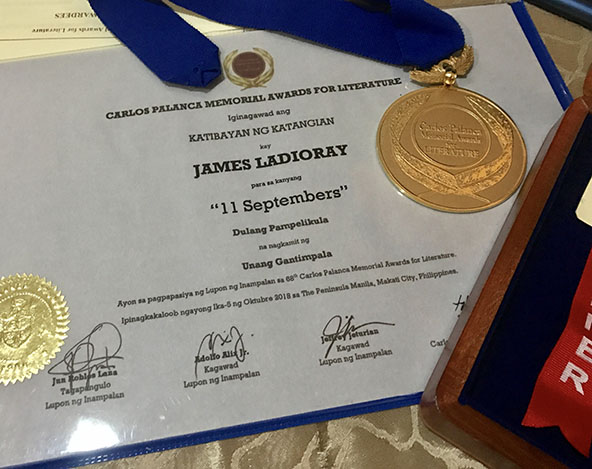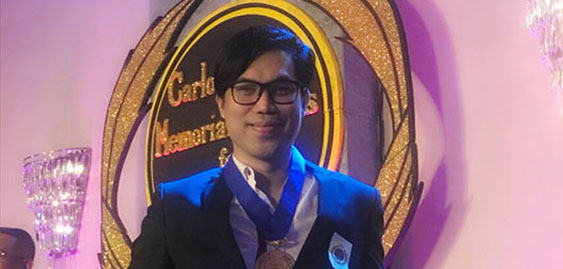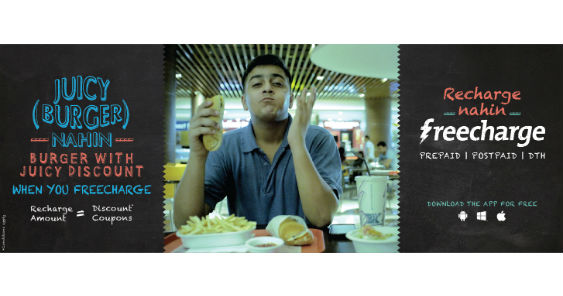Words by Jayel Ladioray
It was such a pleasant surprise to win First Prize in the 68th Carlos Palanca Awards for Literature.
My screenplay “11 Septembers” garnered the top prize for the Dulang Pampelikula selected by a jury for the category headed by award-winning writer-director and Palanca Hall of Famer Jun Lana (writer of Bwakaw, Die Beautiful, Anino sa Likod ng Buwan) and fellow laureled writer-directors Jeffrey Jeturian and Adolf Alix Jr.
This is my first time to get such an honor.

“11 Septembers” is hewn from the catastrophic events of September 11, 2001 (when the World Trade Center collapsed in New York) and how that infamous day of fear and hate can still, somehow, inspire a story of love.
I drew from my own personal “Arabic” experience of 9/11 — something that shook me to the very core and made me realize that, as much of a history buff and culture-vore I thought I already was, I actually still knew so little, and even understood much less, about the world around me.
When 9/11 happened, I was the head Creative Director of the largest ad agency in Jordan (FP7-McCann Erickson) in the capital of the Kingdom, in the city of Amman. McCann was quite a special and unique place to be in Jordan that time, what with its owner, the cousin of King Abdullah no less; even Queen Rania before she met the King was an AE in the agency; there was a healthy mix of foreigners and expats (Europeans and Indians and Pinoys who were mostly art-based OFWs) and, of course, local hires (a balance of Jordanians and Palestinians) who are children of the scions of the land’s most privileged clans. I would often find myself signing leave forms of people because they were going off (yet again – their words not mine) for holidays in their house in Montreux or their villa in Barbados and to wherever else posh private enclave in the world.
I was well beyond 18 months into the role, which included leading pitches for the network based in Dubai, and I had settled in quite snugly in Jordan, having developed connections and friendships with the locals. But nothing could’ve prepared me for how the people (at least those who were physically around me) reacted that day.
I remember there was a lot of noise and commotion in the boardroom. My officemates hurriedly called me in so I could watch with them something that was showing live on CNN. Judging from the energy in the room, I thought it was yet another football match and, based on the smiles and excitement, that their National Team was winning.
But l was terribly mistaken.
They were watching the live footage of the Twin Towers crumbling to the ground and, to my horror, they were all cheering and clapping (!). They only stopped when I said that my brother is in New York. What followed was a collective hush in deference to me. Their conversations continued in muffled tones. But I could understand a little Arabic by then and I knew what they were talking about – that, finally, the Americans are feeling what they had been feeling; that the war is, at last, in U.S. soil and not just in theirs; that a ‘Mabrouk’ or a congratulations was in order for compatriots for having pulled off a courageous, creative and devastating move; that, this time around, they were a non-Jewish David against a pro-Jew Goliath.
I was mortified.
I thought that if this was the reaction of the English-speaking, internationally-educated, supposedly-more progressive, more-than-adequately-traveled and well-heeled crowd (in a country with few rich and even fewer middle class) what more would the reaction be from the greater majority of the economically-challenged, not-as-educated, more traditional, closed populace? If this was the automatic response of some of the people of Jordan, which, for all intents and purposes, was the “Switzerland of the Middle East” (with its half-British Monarch and a history of brokering peace between Israel and the Arab world), what more would the reaction be from other staunchly hardline and more militant Middle East countries?
In an ABC News report, Diane Sawyer posited a question to the Jordanian king himself about footages of the Palestinians (in Egypt and Jerusalem) celebrating the carnage that America had just endured, asking how should Americans react to this other than in abject horror and anger? King Abdullah said that there were only a select few who did just that and that it does not show a reflection of the Palestinian people.
Well, I guess, in Amman, I saw a sample of those “select” few (?). The question of whether that was a true representative reflection of a people or not was (and still is) trickier to answer.
Not to justify anything but most of those people in that boardroom that day were from Palestine; as was most of the educated and wealthy in Jordan were of Palestinian descent (a truth until today). Hence, most of them in that room that day had cousins or family members who perished in the Intifada and in the countless wars, big and small, previously fought and still being fought everyday against Israel. Those lands that the Jewish army seized were their family’s properties, where they had lived for untold generations. For them, the occupation didn’t just start in the Six Day War of 1967, it began much, much earlier, in fact, several millennia earlier, way back to the time of Moses and the Exodus. Such was the sensitivity to anything Jewish. From day one, they refused to call me “Jayel” because, to them, the suffix “-el” is Hebrew meaning “of the Lord” hence they called me “James”. It was as if whoever supported or was connected to Israel might as well had pulled the trigger and had driven them away from their land. Such was the perception of anything Jewish and, by correlation (rightly or wrongly) of anything American.
Amidst the complexities, I asked myself how does the Filipino perspective weigh in on all this? When countries battle it out or bomb one another, dragging the rest of the world into conflict, what do and should we, Pinoys, do? Do we, as a nation exporting a huge number of domestic helpers to the world, particularly to the Middle East, just clean up after all the mess of terror and weapons of mass destruction had done its lethal deed?
I struggled to wrap my brain around why there was such palpable and deep, deep hate.
I started writing thoughts in 2002 and it took many years until it evolved into a screenplay. I’ve actually managed to sell the script twice before, in 2009 and 2012, but, unfortunately, the two separate production outfits weren’t able to produce the script and all rights reverted back to me. But both scripts, then, neither had its current title nor its present form, since I, too, then, neither had the balls to write exactly what I saw nor the faculty to process the whole thing.
Thus, I filed the script away in my “baul”, forgot about it, and only unearthed it early this year. But, this time around, I finally mustered the courage to distill what I witnessed and to ask the tough questions. I gave the script a fresh scrub, a new set of teeth and, what I hoped for, a stronger, grittier bite. I ran the script through a millennial (someone who was only 7 years old when 9/11 happened) to assess if the whole thesis was still relevant. That millennial’s response encouraged me. I guess, there are themes that are timeless in its reverberations: fortunately (or unfortunately), those themes are racism, fear and hate.
But I’ve always wanted to anchor my screenplay to something more positive. In its current form, it is not a political piece. Far from it. From the backdrop of race and religious hate and stereotyping, from the loins of terror and terrorism, it is, at its core, a love story.
The storyline is as follows:
The year is 2000 (the new millennium before FB, YouTube, and anything truly digital was a reality). A heartbroken Filipino Architect, obsessed with tall buildings, flies to his dream destination filled with giant towers – the city of New York. In Manhattan, he meets, by chance, a beautiful and mysterious American lady with a very specific agenda: to visit the different locations in the Big Apple where her favorite romantic films were shot including the classic “An Affair To Remember”. In the three days they are together, they fall in love and decide, to see each other again – not on top of the Empire State Building (like her favorite film) but, from the Pinoy architect’s suggestion, on top of a much taller structure, the tallest on earth at that time – the World Trade Center. And the appointed date: exactly one year after they first met, on September 11, 2001.
The characters, whilst not stereotypical, wrestle with the stereotypes they consciously or unconsciously, imbibe (a Filipina nurse working in the States is richer than her poor white trash American boyfriend; a Palestinian contends with his ethnicity and religion because he is a Christian Orthodox and not a Muslim; a Pinoy wants to bridge the differences but cannot overcome own prejudices, etc).

In photo: Jayel and wife Michal with National Artist Virgilio Almario at the 68th Carlos Palanca Awards Night
This is the second script of mine that won the top prize in script competitions. My first, a black comedy “CUT” won the Grand Prize in the 2002 Cinemanila International Screenplay Competition. My other script, a finalist in Cinemalaya, was produced by Unitel as “The Red Shoes” and won in several international film fests in 2010.
About Jayel Ladioray
Jayel is a creative, strategic, business & brand-building Communications and Content Professional, having an extensive 25-year experience in advertising and marketing of multi-national and local brands. He is currently the Vice President/Creative Services Head for Nestlé Philippines. He is also an award-winning Screenwriter and film co-producer.
Aside from being one of the creative industry’s best, Ladioray also proved his literary prowess, after winning a Palanca award. The Palanca Awards, now on its 68th year, is an annual event recognizing exemplary literary works in different categories. A Palanca award is the Philippine equivalent of the Pulitzer Prize. To date, the Palanca has been conferred to 2,441 works, composed of 625 short stories, 408 poetry collections, 250 essays, 383 one-act plays, 213 full-length plays, 60 teleplays, 74 screenplays, 181 childrens stories, 34 pieces of futuristic fiction, 116 student essays, 42 novels, and 55 poetry collections for children in English, Filipino, and regional languages.










